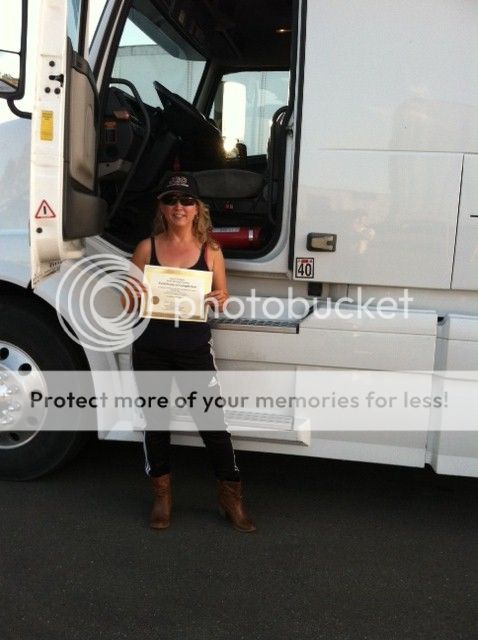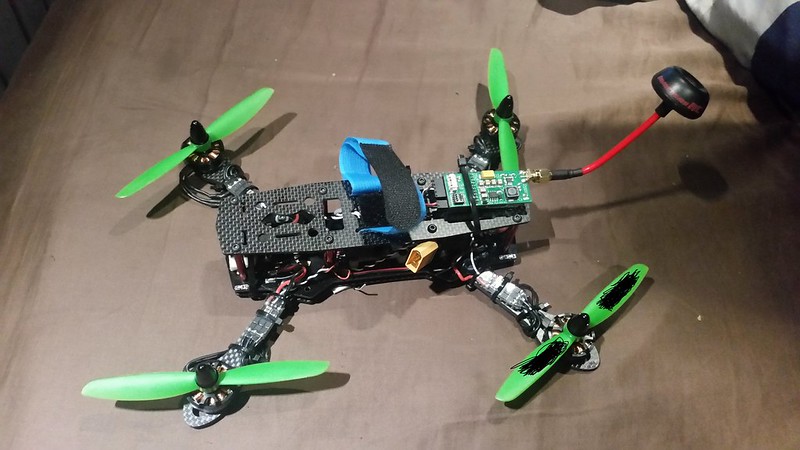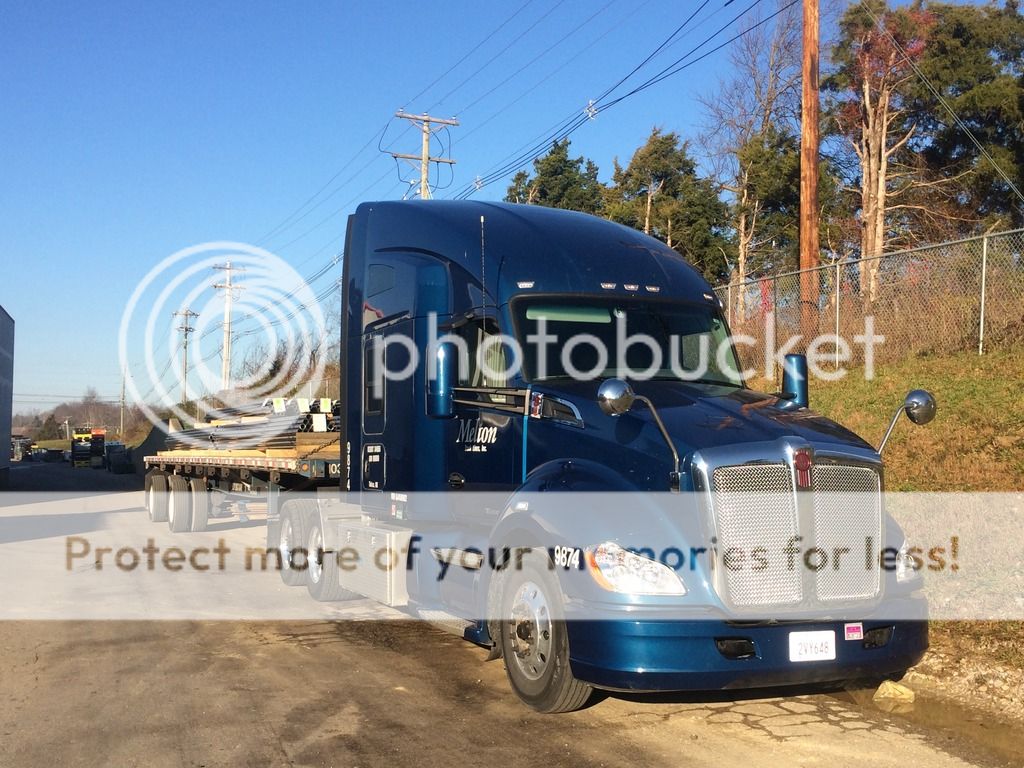Holy Shifting Batman!
Topic 12502 | Page 2
Miss Miyoshi surmises:
I know in VA they will fail you if you don't double clutch all the time. Maybe that's something that can be done once you're actually driving on your own. That whole setup just looked complicated. Hahahaha
Exactly! Learn the double clutching - it is a requirement. It's not painful (in your heart) after a bit. Then, on the road solo, you can just glide those gears up & down. Saves that left knee!
P & D:
Pickup & Delivery
Local drivers that stay around their area, usually within 100 mile radius of a terminal, picking up and delivering loads.
LTL (Less Than Truckload) carriers for instance will have Linehaul drivers and P&D drivers. The P&D drivers will deliver loads locally from the terminal and pick up loads returning to the terminal. Linehaul drivers will then run truckloads from terminal to terminal.
Double Clutch:
To engage and then disengage the clutch twice for every gear change.
When double clutching you will push in the clutch, take the gearshift out of gear, release the clutch, press the clutch in again, shift the gearshift into the next gear, then release the clutch.
This is done on standard transmissions which do not have synchronizers in them, like those found in almost all Class A trucks.
Double Clutching:
To engage and then disengage the clutch twice for every gear change.
When double clutching you will push in the clutch, take the gearshift out of gear, release the clutch, press the clutch in again, shift the gearshift into the next gear, then release the clutch.
This is done on standard transmissions which do not have synchronizers in them, like those found in almost all Class A trucks.
HOS:
Hours Of Service
HOS refers to the logbook hours of service regulations.
One of my instructors showed me how to shift without using the clutch. You use the gas pedal and the gears. Gives a brake to your leg when you're shorter!
Good to hear! I'm barely over 5 foot..BUT I'm gonna wear my motor cycle boots..It will add an inch or so ,lol 

I know in VA they will fail you if you don't double clutch all the time. Maybe that's something that can be done once you're actually driving on your own. That whole setup just looked complicated. Hahahaha
It's a duplex (or twin-stick) transmission; two transmissions, one main (1-6) and one auxiliary (lo-hi and reverse). It was the de-facto technology in the 50's and 60's before air shift "splitters" in a single transmission case became the norm.
Shifting without the clutch is called "floating". Many experienced drivers use this technique. Once you get the hang of double clutching , floating is something that may eventually happen from repetition and understanding the truck's RPM sweet spot (where the gears mesh together).
Double Clutch:
To engage and then disengage the clutch twice for every gear change.
When double clutching you will push in the clutch, take the gearshift out of gear, release the clutch, press the clutch in again, shift the gearshift into the next gear, then release the clutch.
This is done on standard transmissions which do not have synchronizers in them, like those found in almost all Class A trucks.
Double Clutching:
To engage and then disengage the clutch twice for every gear change.
When double clutching you will push in the clutch, take the gearshift out of gear, release the clutch, press the clutch in again, shift the gearshift into the next gear, then release the clutch.
This is done on standard transmissions which do not have synchronizers in them, like those found in almost all Class A trucks.

I use a mixed method of shifting that combines the benefits of double clutching and floating. The benefit to floating is it's easier but on steep uphills or downhills the changing rate and pressure from the tires can be enough to cause the gear to catch early and not form a desirable grip or leave you trying to rock it in by rpm shaking. The benefit to double clutch is that it relieves all of that pressure allowing you to shift with less stress on the tranny, but is more work. So i fully shift out using the clutch. To shift in i ease it barely back into the zone where it applies force from the tire side and spins the tranny to the road speed so i can match gear speed but not with a full grip. Relieves most of the tire side pressure, makes it easier on the tranny, still easier than double clutch, makes it easier on me. My trainer was bad at dealing with uphill downhill floating but would still try and even in my short stay on the truck it started affecting certain gears where, due to incomplete shifts, there was obviously a small lip forming on specifics gears that would catch when you tried to shift in. Mine still works like day one so far.
Double Clutch:
To engage and then disengage the clutch twice for every gear change.
When double clutching you will push in the clutch, take the gearshift out of gear, release the clutch, press the clutch in again, shift the gearshift into the next gear, then release the clutch.
This is done on standard transmissions which do not have synchronizers in them, like those found in almost all Class A trucks.
Double Clutching:
To engage and then disengage the clutch twice for every gear change.
When double clutching you will push in the clutch, take the gearshift out of gear, release the clutch, press the clutch in again, shift the gearshift into the next gear, then release the clutch.
This is done on standard transmissions which do not have synchronizers in them, like those found in almost all Class A trucks.
OWI:
Operating While Intoxicated

Just to clarify my shifting pattern. I clutch in and shift out, then ease the clutch back out until it barely applies tire force to the tranny, shift in, then fully release the clutch. Basically this just replaces the part where you fully out on the clutch to match road and tranny speeds and combines it with the shifting in.

Yep. Good ole two stick. Used to drive one in an old Mack logging truck years ago. They can be lots of fun or a royal pain.

That's just craziness! Hahahaha! Glad I don't have to learn something like this! It seems unsafe to take his hands off the wheel like that.
And am I correct that he's not using his clutch?
He didn't have to take his hand off the wheel. I can't shift using the clutch lol
I hear ya SamTon. I learned how to float from the get go 16 years ago when my ex taught me and had a devil of a time with double clutching in school. But that too shall pass lol. Currently I'm waiting for the paperwork to clear so I can make my current employer my former employer and head off to Chicago for orientation and training. I'm hoping to be headed up there this coming weekend or the one after. Today I'm taking a "mental health day" lol.
Double Clutch:
To engage and then disengage the clutch twice for every gear change.
When double clutching you will push in the clutch, take the gearshift out of gear, release the clutch, press the clutch in again, shift the gearshift into the next gear, then release the clutch.
This is done on standard transmissions which do not have synchronizers in them, like those found in almost all Class A trucks.
Double Clutching:
To engage and then disengage the clutch twice for every gear change.
When double clutching you will push in the clutch, take the gearshift out of gear, release the clutch, press the clutch in again, shift the gearshift into the next gear, then release the clutch.
This is done on standard transmissions which do not have synchronizers in them, like those found in almost all Class A trucks.

To clarify: yes, you will get failed at the CDL exam if not double clutching. Whoch I learned quite well yesterday, once you know it, you just do it! I was very excited. :)
CDL:
Commercial Driver's License (CDL)
A CDL is required to drive any of the following vehicles:
- Any combination of vehicles with a gross combined weight rating (GCWR) of 26,001 or more pounds, providing the gross vehicle weight rating (GVWR) of the vehicle being towed is in excess of 10,000 pounds.
- Any single vehicle with a GVWR of 26,001 or more pounds, or any such vehicle towing another not in excess of 10,000 pounds.
- Any vehicle, regardless of size, designed to transport 16 or more persons, including the driver.
- Any vehicle required by federal regulations to be placarded while transporting hazardous materials.
Double Clutch:
To engage and then disengage the clutch twice for every gear change.
When double clutching you will push in the clutch, take the gearshift out of gear, release the clutch, press the clutch in again, shift the gearshift into the next gear, then release the clutch.
This is done on standard transmissions which do not have synchronizers in them, like those found in almost all Class A trucks.
Double Clutching:
To engage and then disengage the clutch twice for every gear change.
When double clutching you will push in the clutch, take the gearshift out of gear, release the clutch, press the clutch in again, shift the gearshift into the next gear, then release the clutch.
This is done on standard transmissions which do not have synchronizers in them, like those found in almost all Class A trucks.
New Reply:
New! Check out our help videos for a better understanding of our forum features

















Preview:
This topic has the following tags:
Automatic Transmissions Photos Tips For Shifting Truck Equipment







 TT On Facebook
TT On Facebook
I know in VA they will fail you if you don't double clutch all the time. Maybe that's something that can be done once you're actually driving on your own. That whole setup just looked complicated. Hahahaha
Double Clutch:
To engage and then disengage the clutch twice for every gear change.
When double clutching you will push in the clutch, take the gearshift out of gear, release the clutch, press the clutch in again, shift the gearshift into the next gear, then release the clutch.
This is done on standard transmissions which do not have synchronizers in them, like those found in almost all Class A trucks.